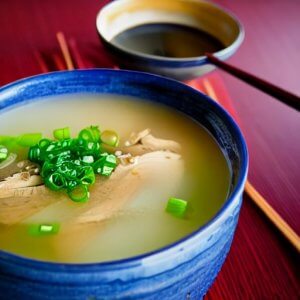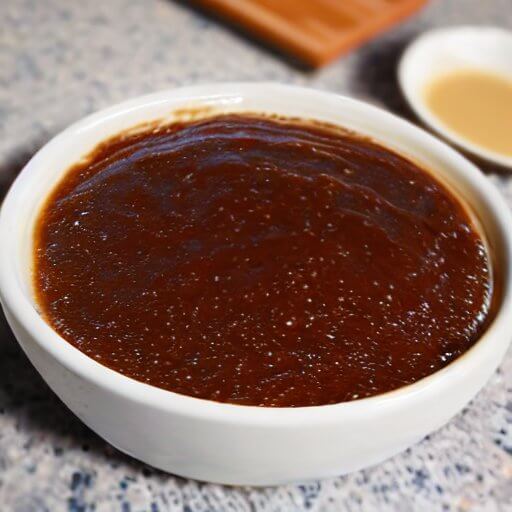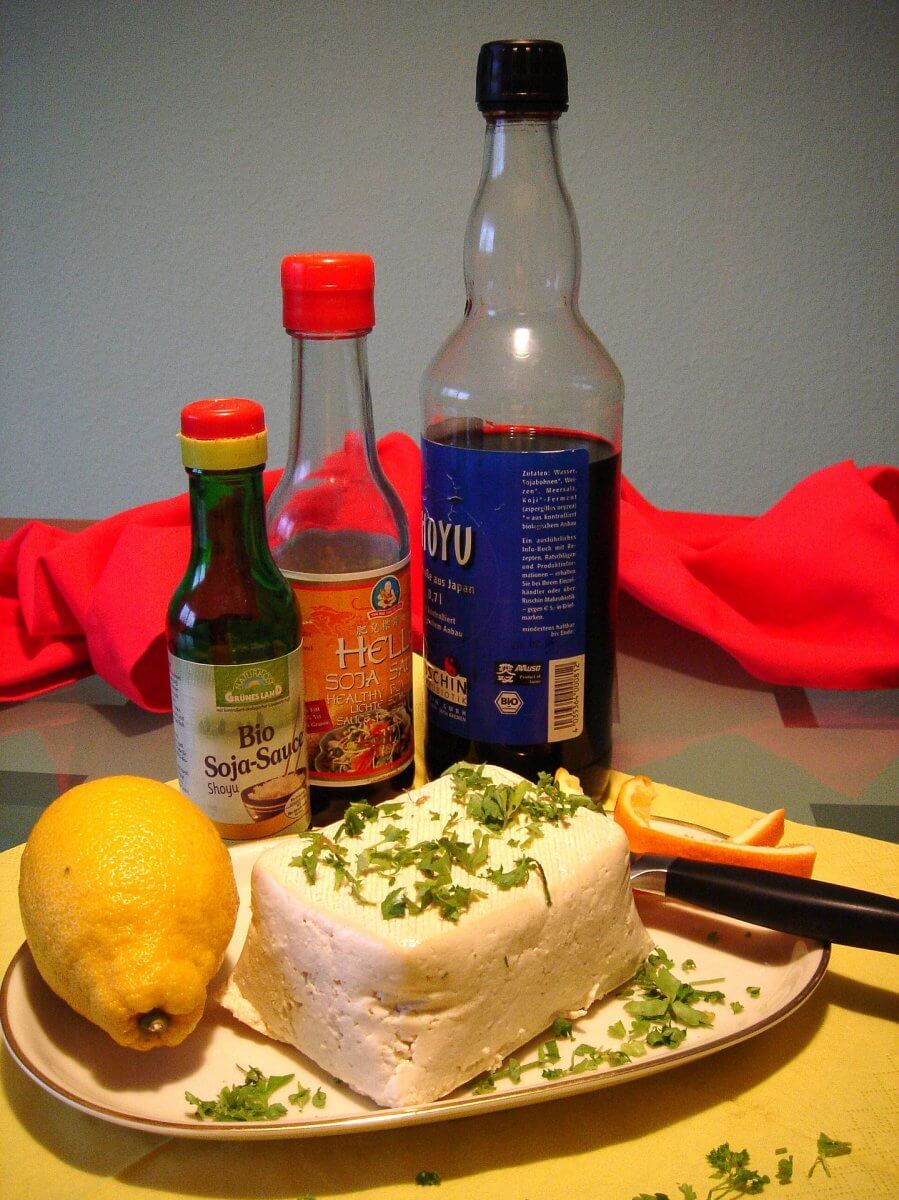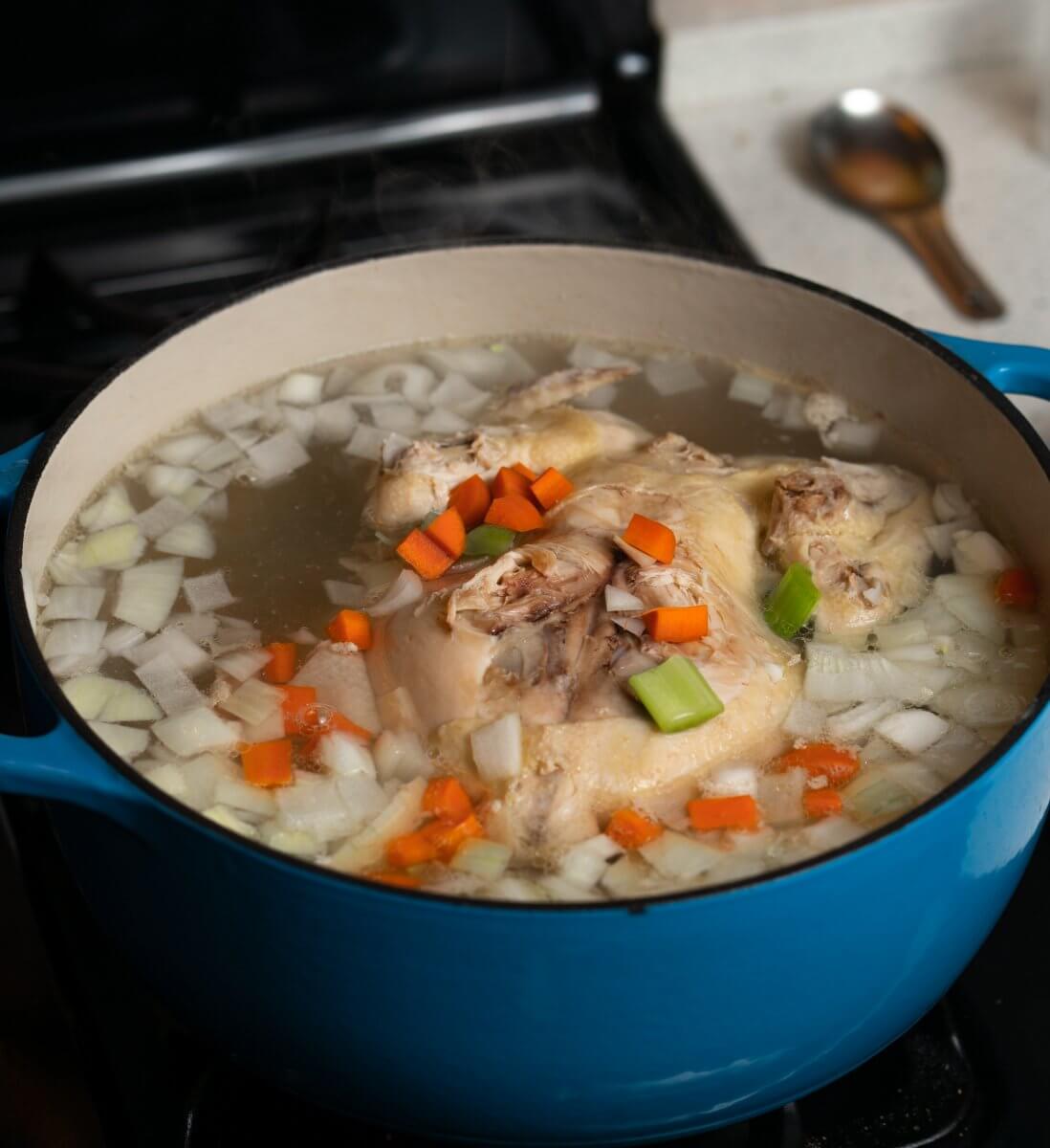You are preparing a dish that needs fish stock, but you have none, what do you do? What are suitable substitutes for fish stock? Don’t panic we can give you some advice on the best substitutes for fish stock.
Introducing substitutes for fish stock opens up a world of culinary possibilities, whether you’re catering to dietary preferences, accommodating ingredient availability, or simply seeking new flavors to experiment with in your dishes. Fish stock, with its distinct oceanic flavor, is a cornerstone of seafood-based recipes. By exploring alternative options, you can create equally delicious and satisfying dishes while imparting unique flavors and characteristics to your creations.
From vegetarian-friendly vegetable stock to umami-packed miso soup and dashi, the choice of substitutes for fish stock is vast and diverse. Each alternative brings its own distinctive taste profile, allowing you to tailor your dishes to your preferences and the specific requirements of your recipe. Whether you’re aiming for a subtle hint of the sea or a bold burst of umami, there’s a substitute to suit everyone. Understanding these ingredients will aloow you to confidently turn any recipe into a masterpiece, regardless of the ingredients on hand. So let’s dive into the world of fish stock substitutes and discover the endless culinary delights that await!
Try using: Miso Soup, Oyster Sauce, Soy sauce, Diluted Fish Sauce, Dashi, or Chicken Stock.
What is Fish Stock?
Fish stock is a flavorful liquid made by simmering fish bones, heads, and other scraps with water and aromatics like onions, carrots, celery, and herbs. The resulting liquid is strained to remove the solids. This leaves behind a clear and flavorful broth that can be used as a base for soups, sauces, and other dishes.
Overall, fish stock is a delicious and versatile ingredient that adds depth and complexity to a wide range of dishes. While it does require some time and effort to make, the resulting flavor and aroma are well worth it.
Okay, before we look at the best substitute options for fish stock, let’s deal with that empty cupboard situation!
Where can I buy Fish Stock?
If you want to be more prepared and ensure you don’t run out of fish stock again then you should stock up now.
Nowadays most health stores, delicatessens, and general supermarkets stock a wide variety of pre-packaged, and tinned fish stock. Or if you prefer you can also purchase fish stock on-line.
So why not jump on and place your order today.
STOCK UP NOW!
Made from organic vegetables and codfish this is a delicious addition to your favorite recipes. Milled Flax Seeds.
MSC certified.
What can I substitute for Fish Stock?
Here are some of the best ways to substitute the flavor and role that fish stock provides in your recipes.
Use any of the following as a substitute:
- miso soup
- oyster sauce
- soy sauce
- diluted fish sauce
- dashi beef stock
- chicken stock
Fish Stock substitutes
Miso soup
Miso soup is a Japanese soup made with miso paste, which is a fermented soybean paste, and dashi, a Japanese broth made from kombu seaweed and bonito fish flakes. The miso paste is added to the dashi along with other ingredients like tofu, seaweed, and green onions. The resulting soup is savory, slightly salty, and has a rich umami flavor. This makes it an excellent substitute for fish stock.
While both miso soup and fish stock can be used as bases for soups, they have different flavor profiles and are used in different types of cuisine. Miso soup is a staple in Japanese cuisine and which you can serve as a side dish or appetizer. You can use fish stock in a variety of cuisines, particularly in seafood dishes like bouillabaisse, chowders, and risottos.
Overall, miso soup and fish stock are both delicious and versatile ingredients that can add depth and complexity to a wide range of dishes. So go ahead and try using miso soup as a substitute for fish stock.

Oyster sauce
Oyster sauce is a thick, dark brown sauce made from oysters, soy sauce, sugar, and other seasonings. A popular ingredient in Chinese, Thai, and Vietnamese cuisine, you can use it to add depth and umami flavor to a variety of dishes. The strong oyster flavor means this is a great alternative to fish stock.
Oyster sauce is commonly used in stir-fries, marinades, and dipping sauces, as well as in meat and seafood dishes. It pairs well with ingredients like beef, chicken, shrimp, and vegetables like bok choy and broccoli.
Overall, oyster sauce is a delicious and versatile ingredient that adds depth and umami flavor to a wide range of dishes. While it may not be suitable for vegetarians or those with shellfish allergies, it is a popular ingredient in many cuisines around the world and is widely available in grocery stores and Asian markets. This would make a good substitute for fish stock.

Soy sauce
Soy sauce is a dark, salty sauce that is made from soybeans, wheat, salt, and water. It is a staple ingredient in many Asian cuisines, particularly Chinese, Japanese, and Korean cuisine. You can use it as a seasoning and flavor enhancer for a variety of dishes. As I love Chinese cooking I always have some in the pantry, so it would be my go-to in an emergency.
Soy sauce comes in different varieties, including light soy sauce, which has a saltier taste and lighter color, and dark soy sauce, which has a richer, more complex flavor and a darker color. There are also low-sodium and gluten-free versions available.
Soy sauce is commonly used as a seasoning in marinades, stir-fries, soups, stews, and dipping sauces. It pairs well with meats, seafood, vegetables, and grains like rice and noodles. In addition to its flavor-enhancing properties, soy sauce is also rich in umami, a savory taste that is known as the fifth taste sensation, after sweet, salty, sour, and bitter.
Overall, soy sauce is an excellent substitute for fish stock. But remember it does have a strong salty flavor, so go easy.

Diluted fish sauce
Diluted fish sauce is fish sauce you mix with water to reduce its saltiness and intensity. Fish sauce is a pungent, salty liquid made from fermented fish, and is a common ingredient in Southeast Asian cuisine.
When diluting fish sauce, it’s important to taste it and adjust the seasoning as needed. Dilution will reduce the saltiness and intensity of the sauce. Therefore you may need to add more fish sauce or other seasonings to achieve the desired flavor. Only add a few spoonfuls at a time and always check the flavor before adding more.
You can use diluted fish sauce as a seasoning for soups, stews, and stir-fries. Alternatively you can use it as as a dipping sauce for spring rolls, dumplings, and other snacks. you can also use it to flavor marinades and dressings.
Overall, diluted fish sauce is a versatile ingredient that adds a unique umami flavor to a wide range of dishes. It’s important to handle it carefully, as it has a strong aroma and can stain clothes and surfaces. Diluting it can make it more palatable and easier to use in cooking.

Dashi
Dashi is a Japanese stock that is commonly used as a base for soups, stews, and sauces. While dashi is traditionally made with kombu (a type of seaweed) and katsuobushi (dried, fermented, and smoked skipjack tuna flakes), there are variations of dashi that use other ingredients, such as beef.
You make beef dashi by simmering beef bones or meat with kombu and other flavorings such as shiitake mushrooms, onions, and ginger. This creates a rich and flavorful broth that you can use as a base for a variety of dishes, including beef-based soups, stews, and sauces.
You can use dashi as a substitute for fish stock and beef stock in many recipes, as it has a similar rich and savory flavor. It pairs well with beef, vegetables, and grains, and you can use it to add depth and complexity to a variety of dishes.

Chicken stock
While chicken stock and fish stock have different flavor profiles, you can use chicken stock as a substitute for fish stock in certain recipes. Here are a few things to keep in mind:
- Chicken stock has a milder flavor than fish stock, so it may not provide the same depth of flavor. To compensate, you can add some fish sauce or anchovy paste to the recipe. This will give it a hint of seafood flavor.
- Chicken stock is richer and heavier than fish stock, so it may not work as well in delicate seafood dishes. However, it can be a good option for heartier stews and soups that call for fish stock.
- If you’re substituting chicken stock for fish stock in a recipe, you may need to adjust the seasoning to achieve the desired flavor. For example, you may need to add more salt or other seasonings to bring out the flavors in the dish.
Overall, while chicken stock may not be a perfect substitute for fish stock, it can work in a pinch in certain recipes. Just be sure to adjust the seasoning as needed to get the best results.

FAQs
Can you use chicken stock with fish?
While chicken stock is not the traditional choice for fish-based dishes, it can still work as a substitute. Some seafood recipes suggest using chicken stock rather than fish stock as it has a more neutral flavour. Just keep in mind that you might neeed to adjust seasonings accordingly. If possible, dilute the chicken stock with water to mellow its taste. This will stop it overpowering the delicate flavors of the fish. Additionally, consider adding some extra herbs and aromatics to enhance the overall profile. It won’t be the same as using fish stock, but it can still add depth and richness to your seafood recipes.
What’s the difference between fish stock and chicken stock?
Fish stock and chicken stock have distinct flavor profiles that can significantly impact the taste of your dishes. Fish stock is typically lighter, delicate, and has a subtle brininess from the seafood ingredients used, such as fish bones, shells, and sometimes vegetables. It’s ideal for enhancing the flavors of seafood-based recipes.
On the other hand, chicken stock has a heartier, more savory flavor. It’s made by simmering chicken bones, vegetables, and sometimes herbs, creating a rich and well-rounded broth. Chicken stock works well in a variety of dishes, from soups and stews to sauces and risottos.
When substituting one for the other, keep in mind that fish stock is lighter in flavor. Therefore, you may need to dilute chicken stock with water to avoid overpowering the delicate taste of seafood. Conversely, if using fish stock in a recipe that traditionally calls for chicken stock, you might want to add extra seasonings to compensate for the lighter flavor.
Summary for Fish Stock substitutes
Okay – that’s you all sorted with suitable substitutes for fish stock.
There are a good range of alternatives to use if you run out of fish stock. But always remember to taste each time you add them into the dish. You can always add more, but you can’t take them back out!
Here’s a quick recap on our suggestions for alternative ingredients you can use for fish stock:
- Miso Soup: Miso soup itself can serve as a flavorful base for dishes that require fish stock. Its umami-rich profile adds depth to soups, stews, and sauces. Dilute miso paste with water to achieve the desired consistency, adjusting the amount based on the intensity of flavor you’re aiming for.
- Oyster Sauce: Oyster sauce brings a savory and slightly sweet flavor to dishes, making it a suitable substitute for fish stock, especially in Asian cuisine. Use it in moderation, as it can be quite potent. Dilute with water or combine with other liquid ingredients to replace fish stock effectively.
- Soy Sauce: Soy sauce provides a rich umami taste and adds depth to dishes. While it won’t replicate the exact flavor of fish stock, it can complement seafood dishes well. Combine soy sauce with water or other broth to create a savory base for your recipe.
- Diluted Fish Sauce: Fish sauce is a concentrated umami bomb commonly used in Southeast Asian cooking. Diluting it with water can create a flavorful liquid base akin to fish stock. Start with a small amount and adjust to taste, as fish sauce can be quite potent.
- Dashi: Dashi, a traditional Japanese stock made from kombu and bonito flakes, offers a subtle umami flavor that can enhance a variety of dishes. It works well as a substitute for fish stock, particularly in Japanese-inspired recipes. Use it as a one-to-one replacement in soups, broths, and sauces.
- Chicken Stock: While not seafood-based, chicken stock provides a savory base for dishes and can be used as a substitute for fish stock in a pinch. It adds depth and richness, albeit with a different flavor profile. Use it in dishes where a seafood taste isn’t crucial.
Each of these alternatives brings its own unique flavor profile to dishes, so feel free to experiment and adjust according to your taste preferences and the requirements of your recipe. And remember if you’re looking to replace fish stock in a recipe, you’ll need to consider what role the fish stock is playing in the recipe and choose a suitable replacement that provides similar benefits.
We have gathered together a lot more facts on ingredients such as herbs, spices, oils, nuts, etc. if you would like to learn some more.

